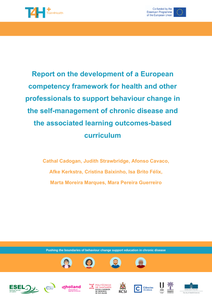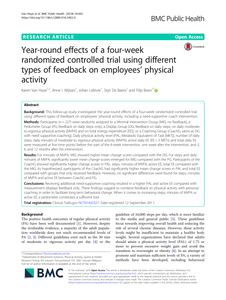To improve people’s lives, human-computer interaction researchers are increasingly designing technological solutions based on behavior change theory, such as social comparison theory (SCT). However, how researchers operationalize such a theory as a design remains largely unclear. One way to clarify this methodological step is to clearly state which functional elements of a design are aimed at operationalizing a specific behavior change theory construct to evaluate if such aims were successful. In this article, we investigate how the operationalization of functional elements of theories and designs can be more easily conveyed. First, we present a scoping review of the literature to determine the state of operationalizations of SCT as behavior change designs. Second, we introduce a new tool to facilitate the operationalization process. We term the tool blueprints. A blueprint explicates essential functional elements of a behavior change theory by describing it in relation to necessary and sufficient building blocks incorporated in a design. We describe the process of developing a blueprint for SCT. Last, we illustrate how the blueprint can be used during the design refinement and reflection process.
DOCUMENT

Professionals' willingness to change is a necessity for successful implementation of changes in the organisation. This study focused on the influence of a transformational leadership style on professionals' willingness to change. This multiple case study was performed in three project management organisations that had recently implemented a new business information system. The research data were obtained through both qualitative and quantitative data collection. The qualitative investigation revealed that through leading by good example a manager has a positive influence on their employees' willingness to change. However, the quantitative investigation showed that there is no relationship between transformational leadership and the motivational factors of willingness to change. Finally, the study showed that the most important factors of employees' willingness to change are timing, involvement, emotions, necessity, and added value.
DOCUMENT

Professionals' willingness to change is a necessity for successful implementation of changes in the organisation. This study focused on the influence of a transformational leadership style on professionals' willingness to change. This multiple case study was performed in three project management organisations that had recently implemented a new business information system. The research data were obtained through both qualitative and quantitative data collection. The qualitative investigation revealed that through leading by good example a manager has a positive influence on their employees' willingness to change. However, the quantitative investigation showed that there is no relationship between transformational leadership and the motivational factors of willingness to change. Finally, the study showed that the most important factors of employees' willingness to change are timing, involvement, emotions, necessity, and added value
DOCUMENT

Chronic diseases represent a significant burden for the society and health systems; addressing this burden is a key goal of the European Union policy. Health and other professionals are expected to deliver behaviour change support to persons with chronic disease. A skill gap in behaviour change support has been identified, and there is room for improvement. Train4Health is a strategic partnership involving seven European Institutions in five countries, which seeks to improve behaviour change support competencies for the self-management of chronic disease. The project envisages a continuum in behaviour change support education, in which an interprofessional competency framework, relevant for those currently practising, guides the development of a learning outcomes-based curriculum and an educational package for future professionals (today’s undergraduate students).
DOCUMENT

Malnutrition is a serious and widespread health problem in community-dwelling older adults who receive care in hospital and at home. Hospital and home care nurses and nursing assistants have a key role in the delivery of high-quality multidisciplinary nutritional care. Nursing nutritional care in current practice, however, is still suboptimal, which impacts its quality and continuity. There appear to be at least two reasons for this. First, there is a lack of evidence for nutritional care interventions to be carried out by nurses. Second, there are several factors, that influence nurses’ and nursing assistants’ current behaviour, such as lack of knowledge, moderate awareness of the importance and neutral attitudes. This results in a lack of attention towards nutritional care. Therefore, there is a need to generate more evidence and to focus on targeting the factors that influence nurses’ and nursing assistants’ current behaviour to eventually promote behaviour change. To increase the likelihood of successfully changing their behaviour, an evidence-based educational intervention is appropriate. This might lead to enhancing nutritional care and positively impact nutritional status, health and well-being of community-dwelling older adults. The general objectives of this thesis are: 1) To understand the current state of evidence regarding nutrition-related interventions and factors that influence current behaviour in nutritional care for older adults provided by hospital and home care nurses and nursing assistants to prevent and treat malnutrition. 2) To develop an educational intervention for hospital and home care nurses and nursing assistants to promote behaviour change by affecting factors that influence current behaviour in nutritional care for older adults and to describe the intervention development and feasibility.
DOCUMENT

Background: For patients with coronary artery disease (CAD), smoking is an important risk factor for the recurrence of a cardiovascular event. Motivational interviewing (MI) may increase the motivation of the smokers to stop smoking. Data on MI for smoking cessation in patients with CAD are limited, and the active ingredients and working mechanisms of MI in smoking cessation are largely unknown. Therefore, this study was designed to explore active ingredients and working mechanisms of MI for smoking cessation in smokers with CAD, shortly after a cardiovascular event. Methods: We conducted a qualitative multiple case study of 24 patients with CAD who participated in a randomized trial on lifestyle change. One hundred and nine audio-recorded MI sessions were coded with a combination of the sequential code for observing process exchanges (SCOPE) and the motivational interviewing skill code (MISC). The analysis of the cases consisted of three phases: single case analysis, cross-case analysis, and cross-case synthesis. In a quantitative sequential analysis, we calculated the transition probabilities between the use of MI techniques by the coaches and the subsequent patient statements concerning smoking cessation. Results: In 12 cases, we observed ingredients that appeared to activate the mechanisms of change. Active ingredients were compositions of behaviors of the coaches (e.g., supporting self-efficacy and supporting autonomy) and patient reactions (e.g., in-depth self-exploration and change talk), interacting over large parts of an MI session. The composition of active ingredients differed among cases, as the patient process and the MI-coaching strategy differed. Particularly, change talk and self-efficacy appeared to stimulate the mechanisms of change “arguing oneself into change” and “increasing self-efficacy/confidence.”
DOCUMENT

This open access book is a valuable resource for students in health and other professions and practicing professionals interested in supporting effective change in self-management behaviors in chronic disease, such as medication taking, physical activity and healthy eating. Developed under the auspices of the Train4Health project, funded by the Erasmus+ program of the European Union, the book contains six chapters written by international contributors from different disciplines. This chapter presents open-access educational products that supplement this book: case studies and a web application to simulate behaviour change support in persons with chronic disease. The former is of particular interest for academic educators, while the latter may interest students independently pursuing training outside the classroom. These products can also be useful for professionals aiming to enhance behaviour change competencies in practice. First, it addresses key aspects of product development, including hallmarks such as the incorporation of behaviour change science and transnational co-production with users. Then, the main features of case studies and the web application with 2D virtual humans are described.
LINK
What kind of serious games dealing with climate change are out there? Do these types of games share similar quality levels across borders? The purpose of this article is to carry out a comparative quality assessment of games produced in two different countries: United States and Spain. For this purpose, we develop and put into practice a tool to assess the quality of thirty games (fifteen US American and fifteen Spanish) based on the opinion of experts through the Delphi method. Criteria are categorized into identification, narrative, contents, gameplay, and didactics. The results show that these games share similarities but also differ from each other, which bring us to establish different quality scenarios for different countries. The total scores reveal a higher quality level of United States serious games on climate change.
DOCUMENT
Habitual behavior is often hard to change because of a lack of self-monitoring skills. Digital technologies offer an unprecedented chance to facilitate self-monitoring by delivering feedback on undesired habitual behavior. This review analyzed the results of 72 studies in which feedback from digital technology attempted to disrupt and change undesired habits. A vast majority of these studies found that feedback through digital technology is an effective way to disrupt habits, regardless of target behavior or feedback technology used.
DOCUMENT

Background: This follow-up study investigated the year-round effects of a four-week randomized controlled trial using different types of feedback on employees’ physical activity, including a need-supportive coach intervention. Methods: Participants (n=227) were randomly assigned to a Minimal Intervention Group (MIG; no feedback), a Pedometer Group (PG; feedback on daily steps only), a Display Group (DG; feedback on daily steps, on daily moderateto-vigorous physical activity [MVPA] and on total energy expenditure [EE]), or a Coaching Group (CoachG; same as DG with need supportive coaching). Daily physical activity level (PAL; Metabolic Equivalent of Task [MET]), number of daily steps, daily minutes of moderate to vigorous physical activity (MVPA), active daily EE (EE>3 METs) and total daily EE were measured at five time points: before the start of the 4-week intervention, one week after the intervention, and 3, 6, and 12 months after the intervention. Results: For minutes of MVPA, MIG showed higher mean change scores compared with the DG. For steps and daily minutes of MVPA, significantly lower mean change scores emerged for MIG compared with the PG. Participants of the CoachG showed significantly higher change scores in PAL, steps, minutes of MVPA, active EE, total EE compared with the MIG. As hypothesized, participants of the CoachG had significantly higher mean change scores in PAL and total EE compared with groups that only received feedback. However, no significant differences were found for steps, minutes of MVPA and active EE between CoachG and PG. Conclusions: Receiving additional need-supportive coaching resulted in a higher PAL and active EE compared with measurement (display) feedback only. These findings suggest to combine feedback on physical activity with personal coaching in order to facilitate long-term behavioral change. When it comes to increasing steps, minutes of MVPA or active EE, a pedometer constitutes a sufficient tool. Trial registration: Clinical Trails.gov NCT01432327. Date registered: 12 September 2011
DOCUMENT
